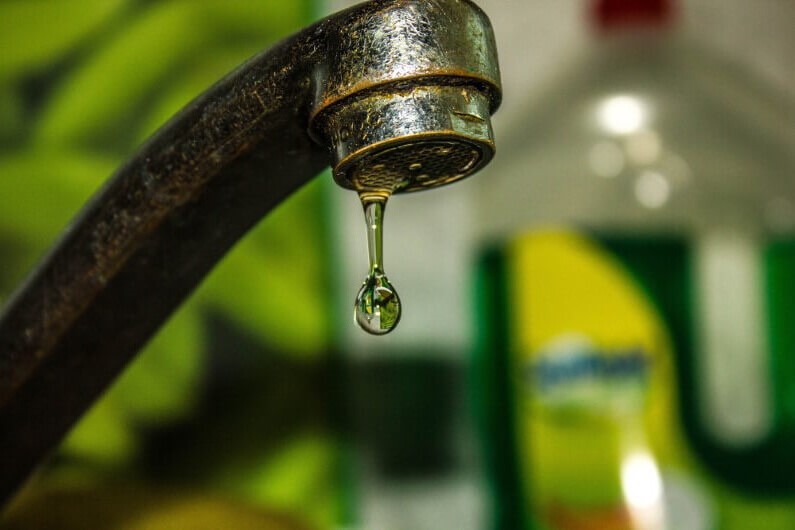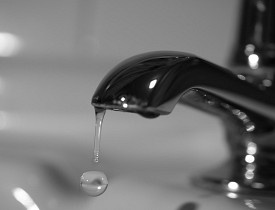An Significance of Resolving a Malfunctioning Faucet
An Significance of Resolving a Malfunctioning Faucet
Blog Article
This great article on the next paragraphs relating to What Causes Leaky Faucets & How To Fix Them is absolutely remarkable. Don't miss it.

Leaking taps could look like a small hassle, but their impact goes beyond simply the annoyance of the sound. From drainage to sustaining unnecessary monetary prices and health risks, ignoring a dripping tap can cause numerous effects. In this write-up, we'll look into why it's important to resolve this usual family issue immediately and successfully.
Waste of Water
Environmental Impact
Dripping faucets add dramatically to water wastage. According to the Environmental Protection Agency (EPA), a solitary tap leaking at one drip per secondly can throw away greater than 3,000 gallons of water per year. This not just pressures water resources yet likewise influences environments and wildlife depending on them.
Step-by-Step Guide to Dealing With a Dripping Faucet
Tools Called for
Before trying to fix a trickling faucet, collect the required devices, including an adjustable wrench, screwdrivers, replacement components (such as washing machines or cartridges), and plumber's tape.
Common Tap Issues and Their Solutions
Determine the sort of faucet and the specific issue triggering the drip. Usual problems consist of damaged washing machines, rusty valve seats, or damaged O-rings. Refer to maker directions or on the internet tutorials for step-by-step advice on repair services.
Financial Prices
Increased Water Expenses
Past the ecological effect, trickling faucets can pump up water bills substantially. The collected wastage with time equates into higher energy expenses, which could have been stayed clear of with prompt fixings.
Possible Residential Or Commercial Property Damages
Moreover, prolonged dripping can result in damage to components and surfaces bordering the tap. Water accumulation can cause staining, deterioration, and even structural issues if left ignored, causing extra repair expenses.
Health Concerns
Mold and Mildew Development
The continuous presence of dampness from a trickling tap produces an ideal setting for mold and mildew development. These fungi not only endanger indoor air top quality yet additionally pose health dangers, specifically for people with breathing problems or allergies.
Waterborne Illness
Stagnant water in leaking faucets can become a breeding ground for bacteria and various other pathogens, boosting the risk of waterborne illness. Contaminants such as Legionella germs grow in stationary water, possibly resulting in serious diseases when consumed or inhaled.
Do it yourself vs. Professional Repair
Pros and Cons of DIY Repair Work
While some might attempt to repair a leaking tap themselves, do it yourself repair services feature their very own collection of obstacles. Without proper knowledge and tools, DIY efforts can intensify the concern or lead to insufficient fixings, prolonging the trouble.
Benefits of Employing a Professional Plumber
Employing a professional plumber makes certain that the underlying root cause of the leaking tap is dealt with successfully. Plumbers have the competence and equipment to identify and fix faucet problems efficiently, conserving time and reducing the threat of more damages.
Ecological Duty
Individual Payment to Preservation
Taking responsibility for dealing with leaking faucets straightens with more comprehensive initiatives toward water conservation and ecological sustainability. Every individual's actions jointly make a considerable influence on protecting precious resources.
Lasting Living Practices
By prioritizing prompt repair services and embracing water-saving behaviors, individuals add to lasting living techniques that profit both existing and future generations.
Preventive Measures
Routine Upkeep Tips
To stop leaking faucets, carry out routine maintenance such as cleansing aerators, inspecting for leaks, and changing damaged parts without delay. Furthermore, take into consideration mounting water-saving devices or updating to extra effective fixtures.
Significance of Prompt Services
Addressing leaking faucets as soon as they're discovered avoids further water waste and prospective damages, inevitably saving both water and cash in the long run.
Impact on Residential Or Commercial Property Value
Assumption of Well-Maintained Residential Or Commercial Property
Preserving a residential property in good condition, including addressing upkeep issues like trickling taps, improves its regarded value and desirability amongst potential buyers or lessees.
Influence on Resale Value
Residences with properly maintained plumbing fixtures, consisting of faucets, command greater resale values in the property market. Dealing with dripping taps can add to a positive impact throughout property assessments and arrangements.
Verdict
Attending to a dripping tap exceeds plain comfort; it's an important step towards conserving water, lowering financial prices, and safeguarding wellness and home. Whether via do it yourself repair work or expert help, acting to repair trickling faucets is a tiny yet impactful way to advertise accountable stewardship of sources and contribute to a healthier, much more lasting future.
How to Fix a Leaky Faucet: Step-by-Step Repair Guide
A leaky faucet may seem like a simple annoyance, but if it's not fixed promptly, that leak could cost hundreds to potentially thousands. From water damage to mold, mildew, and high water bills, even a tiny leak can be catastrophic if left unattended. Damage like this can even affect the overall value of your home, so it's important to take the right approach for leaky faucet repair. You may need the help of a plumber in some cases, but we've got a few tips you can try on how to fix a leaky faucet before calling the pros.
Four Faucet Types
When you're learning how to fix a leaky faucet, the first step is knowing what kind of faucet you're working with! There are four common types.
Cartridge Faucets
Cartridge faucets come in one- or two-handled varieties. In one-handled cartridge faucets, hot and cold water combines in a single cartridge. In the two-handled versions, hot and cold water are controlled separately and mixed in the faucet.
Ball Faucets
Ball faucets have a single lever you push up and down to adjust the pressure and rotate to change the temperature. A slotted metal ball controls the amount of water allowed into the spout.
Compression Washer Faucets
They're the oldest type of faucet, but they're still used in many homes — especially older ones. Compression faucets have two separate handles that, when turned, raise or lower the washer that seals a water valve. This valve stops water from flowing through the faucet when it is turned off.
Disc Faucets
Disc faucets rarely need to be repaired due to their maintenance-free design. The water flow is controlled by two discs — the upper one raises and lowers against a fixed lower disc, creating a watertight seal. If your disc faucet starts leaking, you may need to replace the seals or clean residue buildup from the inlets.
Fixing a Leaky Faucet
Step 1: Turn Off the Water
Whether you're learning how to fix a leaky bathtub faucet or how to fix a leaky kitchen faucet, always turn off the water supply to your working area when you're fixing a leak. The last thing you want is a flood added to your list of things to fix.
Look for the shutoff valves below your sink or around the tub and turn them clockwise to stop the water flow. If your faucet doesn't have shutoff valves, you may need to turn off the water for the whole house. Check to make sure it's off by turning the faucet on. If nothing comes out, you're ready to start the repair.
Step 2: Take Apart the Faucet
How you disassemble your faucet depends on the type of fixture you have. You can use a flathead screwdriver to remove the caps on top of the handle or handles for cartridge and compression faucets. Inside, you should see handle screws. Unscrew these with a screwdriver to remove the handle.
Disc- and ball-style faucets will typically have an inlet screw near the handle, and removing that will reveal the interior of the faucet.
Detach the Valve Stem
For cartridge- and compression-style faucets, you'll see the inner valve stem or cartridge once you remove the faucet handles. If you have a compression faucet, unscrew the brass valve stem. If you have a cartridge faucet, pull out the cartridge. If your cartridge has been in place for a while, it may require some tools or extra force to remove it due to mineral deposits.
Examine and Replace Parts
Once you've removed the parts, check them out to confirm what needs to be replaced. You may see corroded rubber washers, O-rings, stems, or cartridges. On a ball-style faucet, check the seats and springs for damage.
If you need to repair a leaky disc faucet, check the inlet and seals on the lower disc.
Once you determine what parts must be replaced, visit your local hardware store. Bring the damaged parts with you to ensure you can purchase the correct components to replace them.
Clean Valves and Faucet Cavity
If you've removed a stem or cartridge, you may notice mineral buildup in the faucet's threads. Use white vinegar to clean the valve seat by soaking it for a few minutes, then scrub it away with a soft toothbrush and rinse with warm water. You can also clean the interior of the faucet in the same way.
Reassemble the Faucet
Once your faucet is cleaned and the required parts have been replaced, it's time to reassemble it. Put the pieces back together and slowly turn the water supply back on. Doing this slowly is crucial because too much initial water pressure can damage the new hardware you've just installed.
https://homewarranty.firstam.com/blog/how-to-fix-leaky-faucet

I came across that content on How to Fix a Dripping or Leaky Faucet when doing a lookup on the internet. Liked our piece? Please share it. Let other people check it out. Many thanks for going through it.
Report this page